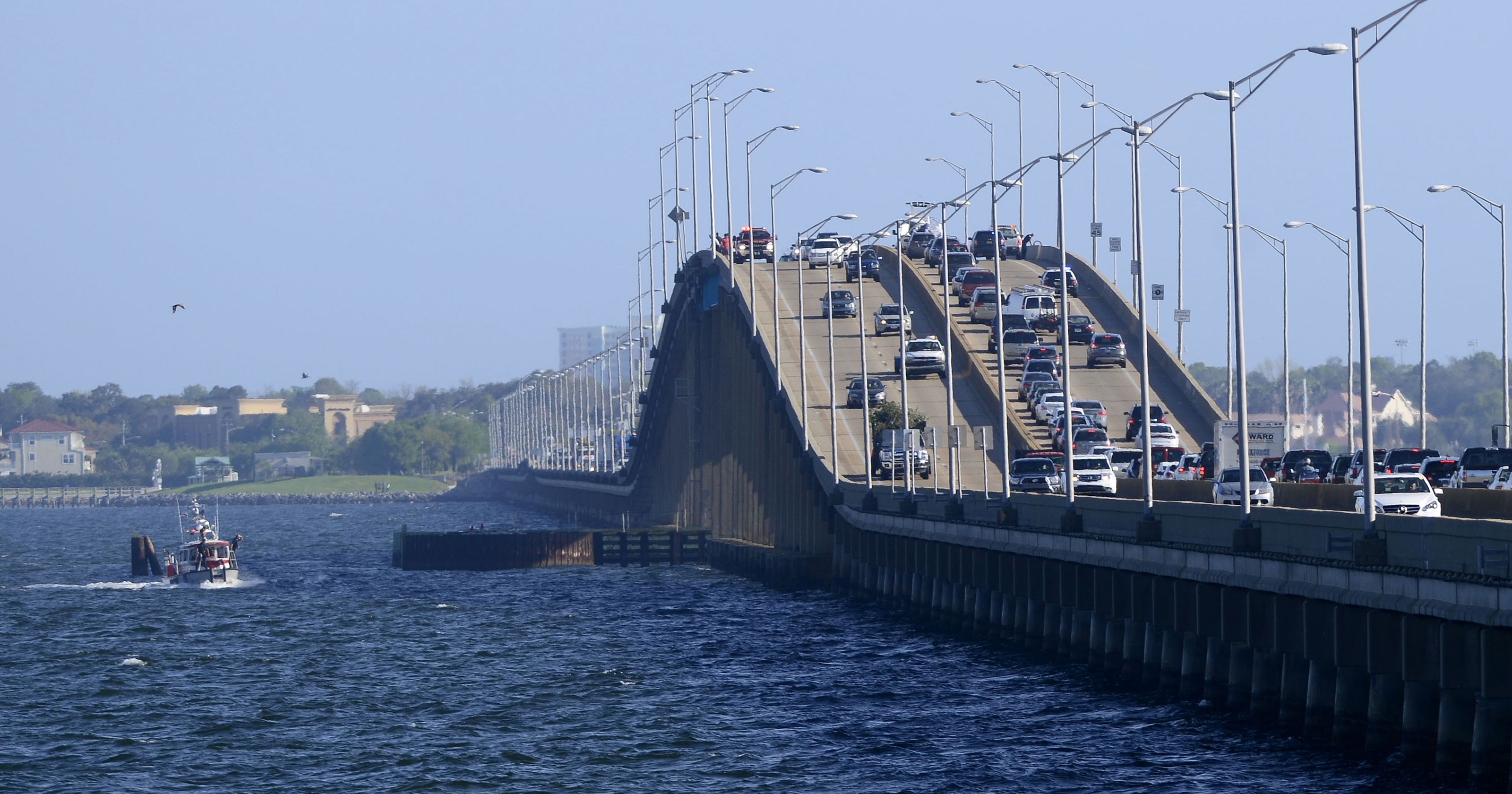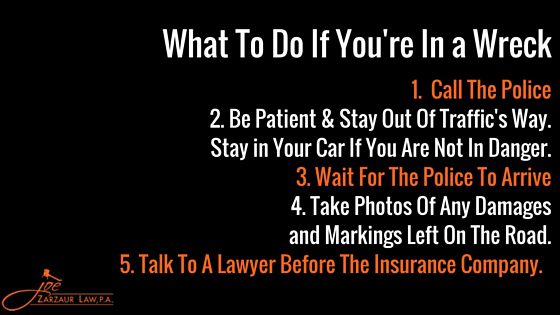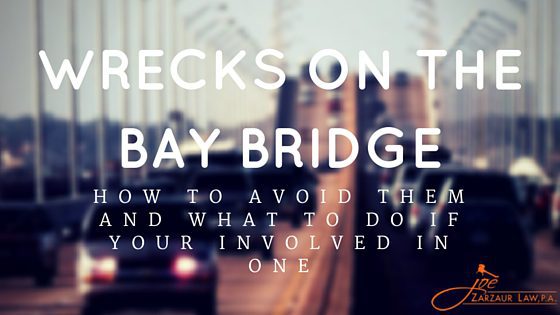Last week the Pensacola News Journal (PNJ) ran an article quoting Gulf Breeze Police Chief Robert Randle who noted that the Bay Bridge wrecks this year were up 20% from previous years. If you have any connection to a daily eastern commute or work route then you will have noticed this increase in the form of nearly daily delays for the last 6 weeks.
So, what’s the cause of this increase? First, it must be noted that we, as drivers (bay bridge or not) are more distracted than ever. We have these devices practically attached to our hands that can do more for us each day. Add to that wrist watches and bands that monitor every vital sign and movement of the day then you have a recipe for diversion. When you overlay this new normal level of distraction with the typical tourist, sightseeing excitement of arriving spring breakers, we now have an entree of disaster on any road. Bridges, however, are a bit worse since there is no margin for error in bridge driving. The shoulder areas are quite limited not even wide enough for the average car to be completely off the road. A near miss on a regular road is a certain crash on the bridge.
The typical three-mile bay bridge wreck occurs either at or near the  “humps” or the elevated portions of the bay bridge or the termination points of the bay bridge. Having personally observed these wrecks from a safe distance, this is generally what happens: everyone is traveling along during one of the rush hours during the week (7am-9am or 4pm-6pm). The cars are a pretty good mix of locals and tourists (starting March and ending in September). As you near the elevated areas of the bay bridge there is some sudden slowing of the traffic. Think of it as a large speed bump. Anyway, traffic slows and all of us who know this expect this slowing of the traffic flow and generally space our cars a safe distance away. However, the folks from “out of town” have no concept of this slowing and just figure traffic flows constantly and consistently. They are anxious to be nearing their final destination and now they can virtually see the beach from their car. They are looking at the water, sunset, boats etc and then they are confronted with a sudden stopped of traffic. The natural reaction is for drivers to slam on brakes and then steer around the car in front of them. Of course on a regular road, this might work, however on a bridge like our three-mile bay bridge, there is nowhere to go and the wreck occurs. It happens suddenly but not with warning.
“humps” or the elevated portions of the bay bridge or the termination points of the bay bridge. Having personally observed these wrecks from a safe distance, this is generally what happens: everyone is traveling along during one of the rush hours during the week (7am-9am or 4pm-6pm). The cars are a pretty good mix of locals and tourists (starting March and ending in September). As you near the elevated areas of the bay bridge there is some sudden slowing of the traffic. Think of it as a large speed bump. Anyway, traffic slows and all of us who know this expect this slowing of the traffic flow and generally space our cars a safe distance away. However, the folks from “out of town” have no concept of this slowing and just figure traffic flows constantly and consistently. They are anxious to be nearing their final destination and now they can virtually see the beach from their car. They are looking at the water, sunset, boats etc and then they are confronted with a sudden stopped of traffic. The natural reaction is for drivers to slam on brakes and then steer around the car in front of them. Of course on a regular road, this might work, however on a bridge like our three-mile bay bridge, there is nowhere to go and the wreck occurs. It happens suddenly but not with warning.
 The warning signs are simple. First, the time of year is quite predictive. If it’s March through August, there is a high potential for this issue. The hour of the day is another warning sign. If it is a time of day when traffic on the bay bridge is congested there the chances of a wreck are mush more likely. These times are the rush hours during the work week and between 10:30am and 7pm on the weekend days. The better the weather on the weekend the worse the traffic.
The warning signs are simple. First, the time of year is quite predictive. If it’s March through August, there is a high potential for this issue. The hour of the day is another warning sign. If it is a time of day when traffic on the bay bridge is congested there the chances of a wreck are mush more likely. These times are the rush hours during the work week and between 10:30am and 7pm on the weekend days. The better the weather on the weekend the worse the traffic.
If you find yourself navigating these three miles think about the time of the year, the day of the week and the time of day. Then think, “I am going to leave twice the room between cars that I usually leave.” This will give you time to drive and avoid a collision.
If, however, you are involved in one of these wrecks on the bay bridge. The steps you take following the wreck can be the most critical to your safety. First, call the police. For southbound traffic, that is Pensacola Police Department. For the northbound traffic, that is the Gulf Breeze Police Department. They will immediately report to the scene and provide safety for all involved. The most dangerous time for your safety is the period of time immediately following the wreck but before the police arrive. This is when you and those persons in your car can easily be killed by subsequent wrecks. So long there is no threat that your car could catch fire (when there is damage significant enough to cause a fuel leak), you and your passengers should stay belted and in your car. It is the safest place on the bay bridge following a wreck.  Wait until the scene is completely being controlled by police and there is a complete blockade of traffic behind your vehicle before exiting your car. Then only do so with the knowledge and approval of the responding officers.
Wait until the scene is completely being controlled by police and there is a complete blockade of traffic behind your vehicle before exiting your car. Then only do so with the knowledge and approval of the responding officers.
As far as liability is concerned, nearly every case is investigated by the Florida Highway Patrol and virtually all result in a ticket. So, liability is rarely in dispute. However, the significance of the crash is often in dispute. So, once everyone is safely barricaded away from other traffic, a few phone pictures demonstrating the damage to all vehicles and the markings left on the road are helpful but not critical. Always remember that insurance company adjusters get paid incentives for settling cases within 24 hours and you should always wait and speak with a lawyer before proving a statement to any (even your company’s adjuster) insurance company.
